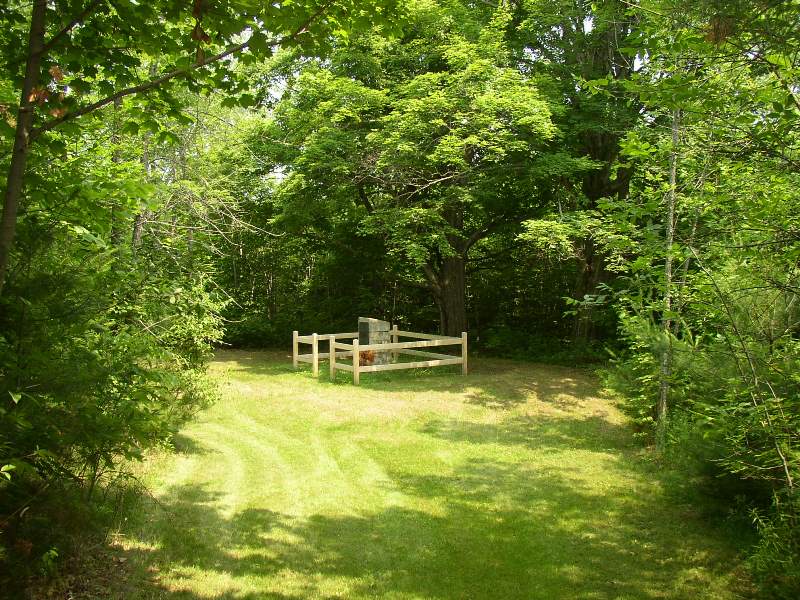
Monument with plaque at the site of the birthplace of anti-slavery journalist Ellijah Parish Lovejoy (2003)
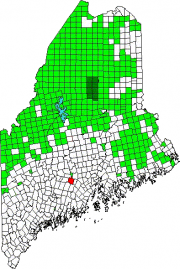
Location map for Albion
| Year | Population |
|---|---|
| 1970 | 1,056 |
| 1980 | 1,551 |
| 1990 | 1,736 |
| 2000 | 1,946 |
| 2010 | 2,041 |
| Geographic Data | |
|---|---|
| N. Latitude | 44:30:48 |
| W. Longitude | 69:26:08 |
| Maine House | District 79 |
| Maine Senate | District 16 |
| Congress | District 2 |
| Area sq. mi. | (total) 39.5 |
| Area sq. mi. | (land) 38.9 |
| Population/sq.mi. | (land) 52.5 |
County: Kennebec
Total=land+water; Land=land only |
|

Population Trend 1810-2010
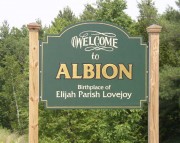 [AL-bee-un] is a town in Kennebec County, incorporated as Fairfax on March 9, 1804 from its original status as a plantation under the name of Freetown. It annexed some land from Winslow in 1810 and gave up land in 1813, 1816, and 1818 which eventually formed the town of China. On March 10, 1821, the town changed its name from Fairfax to Ligonia, and then to Albion, the ancient name of England, on February 25, 1824.
[AL-bee-un] is a town in Kennebec County, incorporated as Fairfax on March 9, 1804 from its original status as a plantation under the name of Freetown. It annexed some land from Winslow in 1810 and gave up land in 1813, 1816, and 1818 which eventually formed the town of China. On March 10, 1821, the town changed its name from Fairfax to Ligonia, and then to Albion, the ancient name of England, on February 25, 1824.
Albion was Maine’s one hundred and fifty-first town. Since 1970, Albion’s population has about doubled, with consistent, but modest growth in recent decades. The Town Office is now in an early 20th Century building, which also serves as a meeting place for civic groups.
First settled in 1790, probably by Congregational minister Daniel Lovejoy, Albion is the birthplace of Elijah Parish Lovejoy, son of Daniel and a fearless journalist and opponent of slavery. A plaque to Lovejoy rests outside the town library.
Form of Government: Town Meeting-Select Board-Administrative Assistant.
Additional resources
Albion on the Narrow Gauge. Clinton, Me. 1964.
Albion, Maine Sesquicentennial: 1824, August 2-3-4, 1974. Pittsfield, Me. The Valley Times. Pittsfield Pub. 1974.
Maine. Historic Preservation Commission. “Hussey-Littlefield Farm, Albion, Kennebec County, c. 1838-1905.” http://www.maine.gov/tools/whatsnew/index.php?topic=mhpc_recent_listings&id=670559&v=article (November 18, 2018)
Wiggin, Ruby Crosby. Albion on the Narrow Gauge. Clinton, Me.? 1964. (Narrow Gauge Railroad)
Cemetery Inscriptions of Albion, Maine. Maine. Maine Old Cemetery Association. 1971.
Town of Albion. New York: H.W. Blake & Co., 1892. Extracted from: Illustrated history of Kennebec County Maine, 1625-1799-1892 / editors Henry D. Kingsbury, Simeon L.Deyo. (Maine State Library)
Vital Records of Albion, Maine, prior to 1892. Transcribed by Elizabeth M. Mosher. Camden, Me. Picton Press. 1989. Wiggin, Ruby Crosby.
2021
South Albion on Main Street (Maine Routes 202, 9, 137) [Click to enlarge]
- Main Street South Albion
- Church in South Albion
- South Albion (2021)
National Register of Historic Places – Listings
Hussey-Littlefield Farm
[Hussey Road] On the outside, the Hussey-Littlefield House is an attractive, well proportioned, Greek Revival and Italianate style farm house with a series of ells connecting the house to the New England-plan barn. Set on a rural 6.8 acre lot surrounded by fields and other older farmhouses. The house was built about 1838 and has a comfortable dignity that befits its location and style.
At a passing glance, one might be forgiven to imagine that this structure has descended unchanged as a relic of a simpler, easier, pastoral past.
But under the skin of clapboards and shingles, this house, as with so many in rural Maine, is an example of an evolving architectural approach that echoed the agricultural challenges and trends of the 19th century. The Hussey-Littlefield House is an excellent
example of a New England connected farm complex, a type of property that is found almost exclusively in Northern New England.




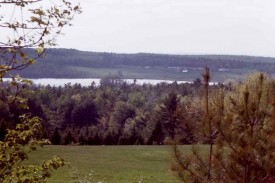
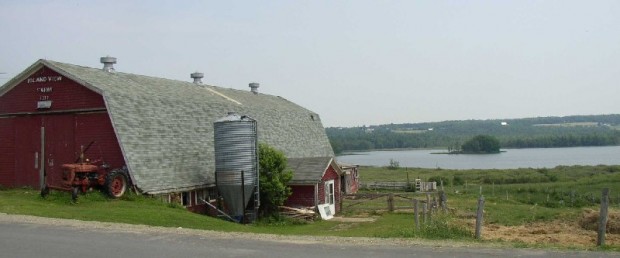
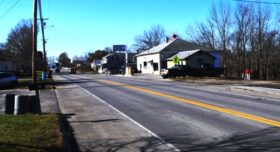
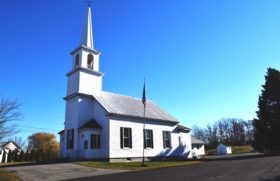
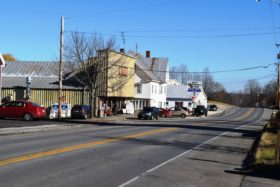

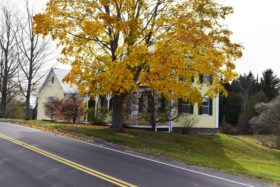
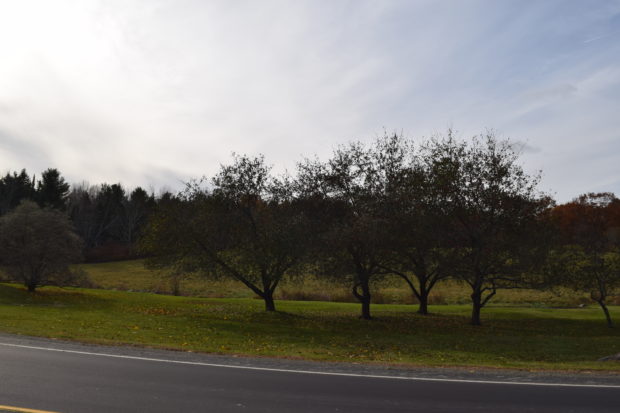
First, I am so pleased to discover this resource, after reading the bio of Jim Henderson on p 143 of the Maine Policy Review, Spring 2015.
Now to find Albion handsomely represented, thank you.
Liberty Men and Great Proprietors, Alan Taylor, UNC press 1990
from which I infer that Daniel Lovejoy was among the early settlers. I think, though, that he oughtn’t be called the founder – it’s only that he is prominent because of Elijah.
Belated thanks for your comment and insight.